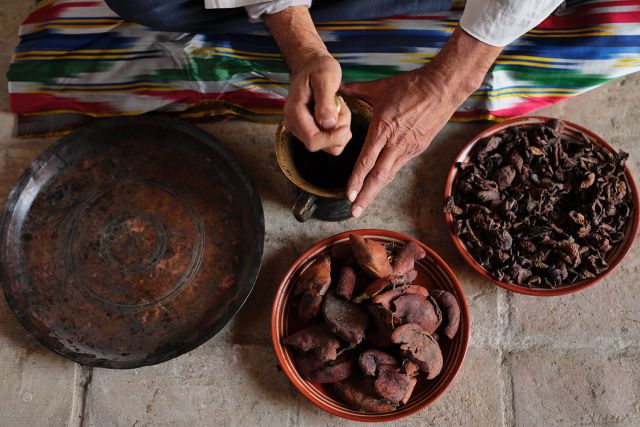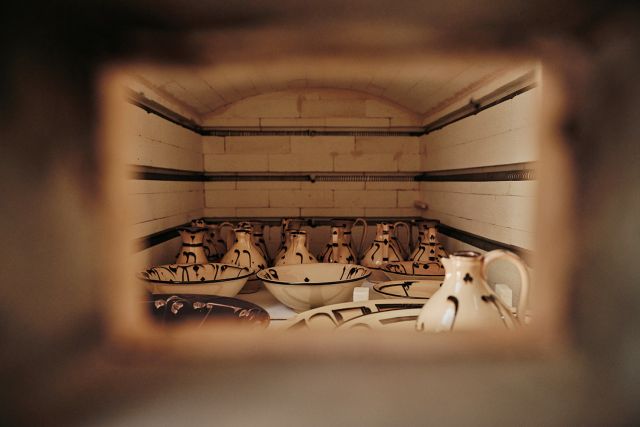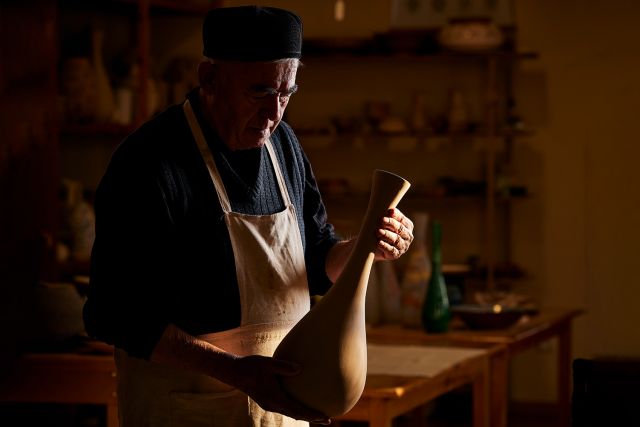Chapans like this one were historically intended for the wealthy, while nowadays they are worn by grooms at weddings. The style, design and patterns are typical of the 18th century.
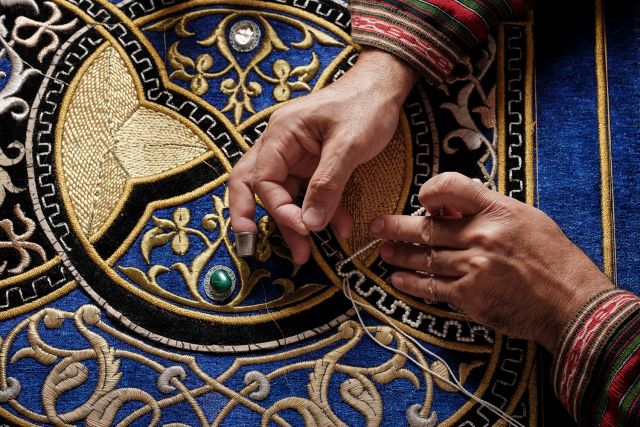
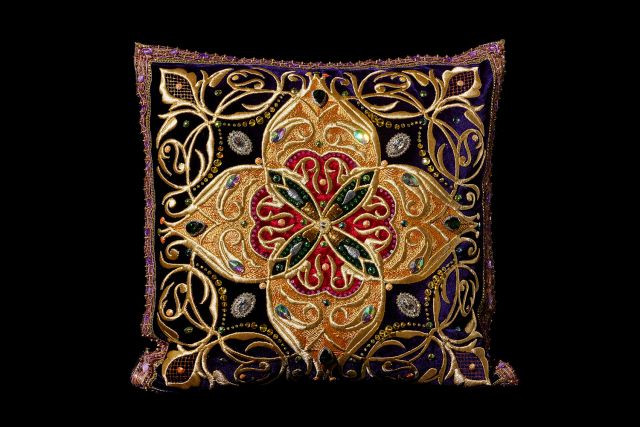
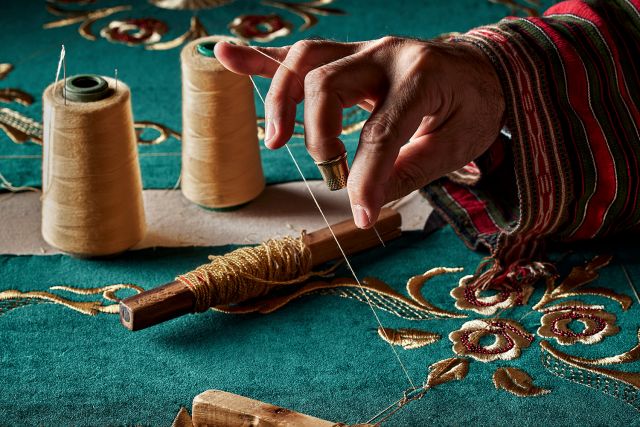
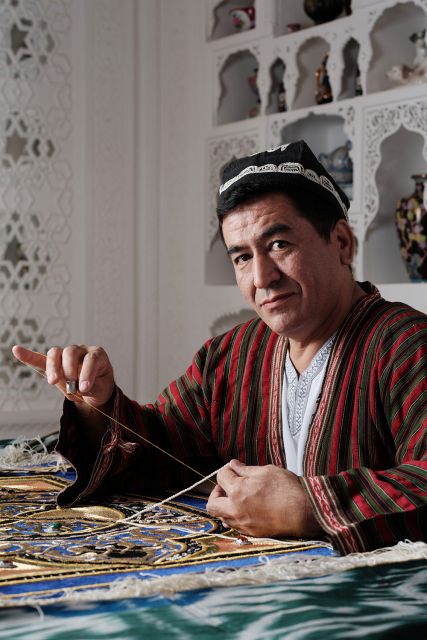
Nodir Rasulov
- Dili Nafis
- Gold thread embroiderer
- Bukhara, Uzbekistan
- Master Artisan
- Recommended by The Art and Culture Development Foundation
B.Naqshbandi 39, Bukhara, Uzbekistan
Daily 09:00 to 18:00
+998 936251112
A gloriously timeless craft
- • Nodir manufactures golden threads for his embroideries himself
- • He uses ancient techniques still popular with his customers
- • His patterns are thoroughly researched and given modern touches
Gold thread embroidery is an ancient craft and Bukhara has historically been its centre. Nodir Rasulov started learning his craft in early childhood. He was born into a family of artisans: his father was a professional woodcarver and his mother and sisters wove carpets and rugs. After trying his hand at various crafts, Nodir realised that he wanted to dedicate himself to gold thread embroidery. Today he creates a variety of pieces, from women's and men's clothes to household items, such as pillowcases and curtains. He constantly researches traditional patterns both in museum archives and academic books, travelling around the country and studying local differences. He then combines them with contemporary designs, keeping his work relevant for the 21st century.
Read the full interviewWorks
Photo: ©Andrey Arakelyan

Photo: ©Andrey Arakelyan
This is a 19th century replica gown, made of 925 sterling silver, gold, gold thread and multi-coloured crystal stones, sewn in a flowerbed style and embellished with coloured crystal stones. The fabric was made in Moscow in the 1970s from silk and silk fibres.

Photo: ©Andrey Arakelyan
This decorative pillow cover with a rose pattern is sewn in lattice style with multi-coloured beads and crystal stones for decoration.

Photo: ©Andrey Arakelyan
This coverlet with national patterns is called a takiyapush and is traditionally made for brides.

Photo: ©Andrey Arakelyan
It took 7 months to hand-embroider this men's robe with 18th century patterns. A chapan like this is usually worn for wedding ceremonies.





